
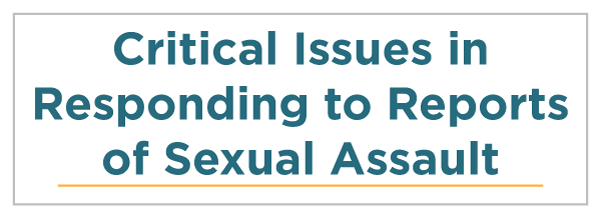 |
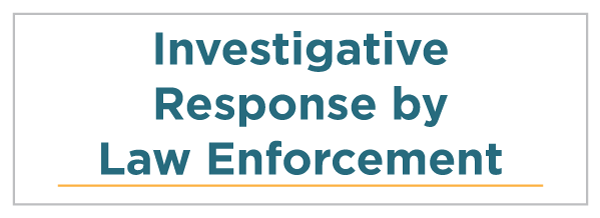 |
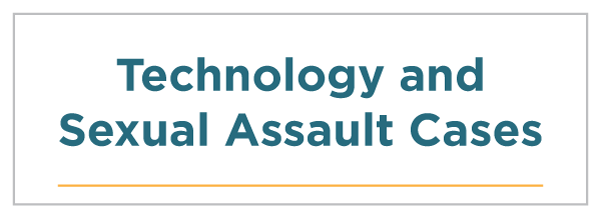 |
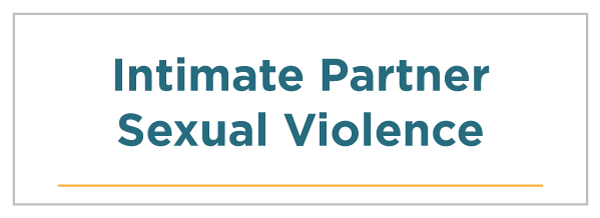 |
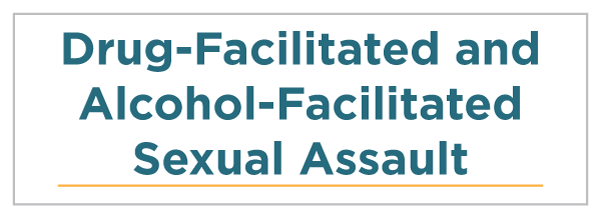 |
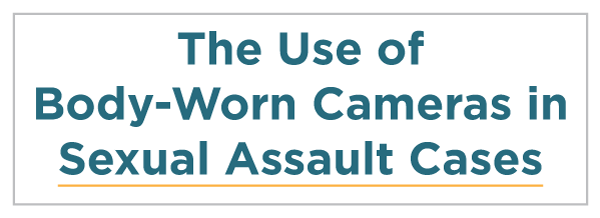 |
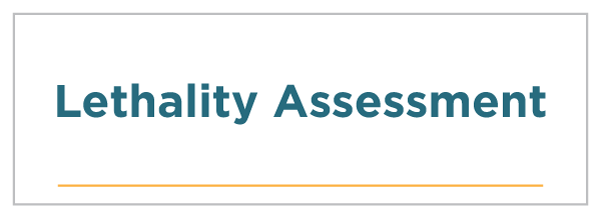 |
 |
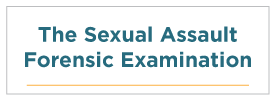 |
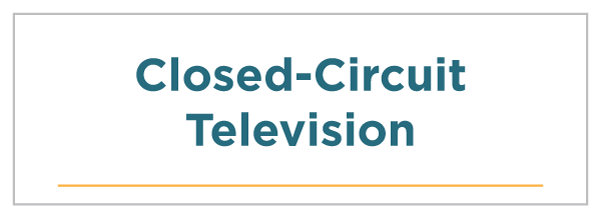 |
 |
 |
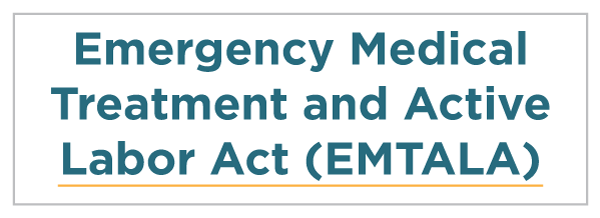 |
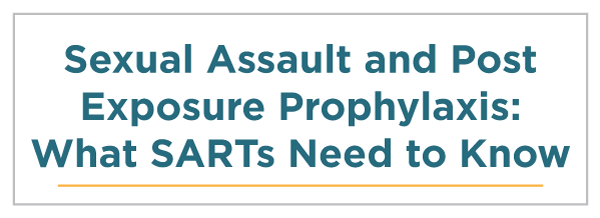 |
 |
Victims have the option to receive a sexual assault medical forensic examination following a sexual assault. It is critical that SARTs implement a collaborative, multidisciplinary approach for the medical forensic exam process. Victim advocates should enter the process early and include underserved or vulnerable voices in the community’s response. Everyone on your SART should use a victim-centered and trauma-informed approach when engaging with the victim. [98]
The Violence Against Women Act (VAWA) ensures victims access to a forensic exam, regardless of their decision to engage with law enforcement. [99] The 2017 National Best Practices for Sexual Assault Kits Report states that medical forensic examinations should be an option for those who choose not to report or those who report anonymously. [100] With the exception of situations covered by mandatory reporting laws, victims decide if information regarding the assault is reported to law enforcement. [101]
VAWA ensures an examination is free of cost to victims. This provision applies to evidentiary costs; costs associated with medical testing, treatment of injuries, and the treatment of STI varies by jurisdiction. [102] Victim compensation funds may cover these additional costs for patients. [103] Compliance with these VAWA provisions is required for states, territories, tribal governments, and the District of Columbia to continue receiving federal Services Training Officers Prosecutors (STOP) grant funding.
Forensic Compliance Frequently Asked Questions [104]
This website from EVAWI provides answers to common questions about VAWA and payment for medical forensic exams.
Payment for the Examination Under VAWA [105]
This resource from SAFEta.org discusses payment for the medical forensic exam under VAWA.
Rape and Sexual Assault Reporting Requirements for Competent Adult Victims [106] (PDF, 189 pages)
This report by the Department of Defense contains a summary of the national rape and sexual assault reporting requirements, a list of issues that may be encountered, and state statutes.
Reporting Requirements Related to Rape of Competent Adult Victims [107] (PDF, 163 pages)
This report from the National Center for Prosecution of Violence Against Women provides an overview of laws that require medical personnel to report that they have treated a competent adult rape victim.
When victims of a recent sexual assault present for an evidence collection exam, health care providers are afforded an opportunity to: (1) address the victims’ health care needs resulting from the event, (2) objectively document the events of the assault, and (3) collect biological (DNA) evidence. [109]
It is recommended that sexual assault patients be treated as a priority in the emergency department and that evaluation and treatment of serious, acute, or life-threatening injuries be addressed before evidence collection. [110] The support of a trained advocate should be offered to all patients and their personal safety evaluated.
Health care professionals should offer prophylactic treatment for STIs, HIV, and pregnancy based on the history of the assault and current best practice standards. [111] A forensic history is completed to guide the evidence collection portion of the examination.
The National Institute of Justice (NIJ) recommends that the exam be conducted by a professional who is trained in evidence collection related to sexual assault and that the samples be collected as soon as possible and up to five days or longer post-assault. [112] Evidence collection samples vary based on the history of the assault and may include oral, anal, vaginal, or penile swabs; collection of hair samples, blood and or saliva; swabs from skin or dried secretions, or clothing that may contain potential evidence. [113] Additionally, trained examiners should obtain blood and urine samples, with the patient’s informed consent, in cases of suspected alcohol or drug facilitated sexual assault.
Because of the increased sensitivity to DNA technologies, all those who come in contact with samples should wear masks and gloves, especially during the collection of intimate samples. [114]
All samples are collected with the patient’s informed consent; evidence samples are sealed, stored, and transported according to the local protocol for storage or analysis by the designated crime lab. Additional biological or trace evidence may be available at the crime scene and collected by law enforcement officials for further evaluation. [115]
The forensic exam can take several hours to complete. Life-threatening injuries and immediate safety needs are addressed before evidence collection begins. [116], [117] Non-acute injuries and health care concerns are addressed after the completion of evidence collection. [118]
It is important SART members know DNA basics to develop polices and protocols based in accurate information. DNA biological evidence, which contains deoxyribonucleic acid (DNA), is a type of physical evidence sought during the forensic exam. [119]
Forensic DNA evidence deteriorates with time. [120] That is why local hospitals or clinics should give law enforcement agencies the sexual assault evidence collection kits (SAKs) as soon as possible, but ideally no more than three business days from the collection of the kit. In turn, law enforcement should submit the SAK to the laboratory no later than seven days from the collection of the SAK, or as specified by statute. [121] Advances in DNA testing have expanded ways in which biological evidence can be used during an investigation and prosecution of a crime. [122]
When SAKs are analyzed in a crime laboratory, a rigorous process is performed to detect any foreign DNA profiles (DNA that is not from the victim). If a foreign DNA profile is extracted, the profile is entered into state and national DNA databases using the FBI’s Combined DNA Index System (CODIS), which uses forensic science and technology to link violent crimes to each other and known offenders and to identify missing persons. [123] CODIS may be helpful in identifying an unknown suspect, linking DNA profiles between crime scenes to identifying serial rapists and eliminating suspects. [124]
National Best Practices for Sexual Assault Kits: A Multidisciplinary Approach provides additional information. For example, the report recommends that law enforcement agencies establish a system of accountability to ensure timely follow up on CODIS hits.
DNA testing and DNA databases are critical tools in the investigation of sexual assault cases. In Detroit, Mich., for example, testing of previously untested SAKs and the subsequent entering of DNA profiles into CODIS led to the identification of over 770 potential serial offenders. [125] As of April 2017, the National DNA Index System (NDIS) contained over 12,854,420 offender profiles, 2,708,809 arrestee profiles, and 772,613 forensic profiles. CODIS has produced over 373,099 hits, assisting in over 358,069 investigations. [126]
Success in meeting medical needs and forensic objectives in a community depends not only on the training and skill of the forensic examiner but also on the coordinated efforts of SART members. SARTs are often the foundation for responding to sexual assault cases and connecting victims with medical care.
SARTs should have local agreements and protocol in place to —
Evidence collection protocols typically have timeframes indicated for the collection of samples from survivors following an assault. Evolving DNA technologies have extended the time limits that samples may be collected beyond those once accepted as the “gold standard.”
SARTs are encouraged to stay abreast of emerging DNA research and to periodically evaluate the need to extend their evidence collection timeframes to maximize the recovery of evidence. [127] Involving the crime lab personnel on a SART is a recommended practice to ensure the decisions made regarding sample collection are consistent with jurisdictional protocol, locally available technology, and local evidence collection processes. [128]
Information about specific timeframes is available in National Best Practices for Sexual Assault Kits: A Multidisciplinary Approach. [129] Promising research provides confirmation that advances in DNA research and technologies will continue to inform the practice of evidence collection for sexual assault.
Forensic evidence is one piece of a sexual assault investigation. SART members should be knowledgeable about different types of evidence and their possible implications in sexual assault investigations. This section of the SART Toolkit reviews basic information SART members should be aware of.
The U.S. Department of Justice National Best Practices for Sexual Assault Kits: A Multidisciplinary Approach can be consulted for up-to-date information on best practices and details. Forensic examinations alone do not determine whether a sexual assault was committed. DNA evidence is not necessary for a conviction in a sexual assault case. [130] The presence or absence of physical injury, trace evidence, or DNA does not “prove” a sexual assault occurred. [131] The documentation of medical history and physical exam findings as part of a sexual assault medical forensic examination is equally important if the victim chooses to report the sexual assault and engage with the criminal justice system.
Evidence collected is used in four potential ways in a sexual assault case:
The findings from a sexual assault medical forensic examination may provide information to help reconstruct the details of an assault in an objective and scientific manner. During an investigation, law enforcement agents look for additional evidence from the suspect(s), crime scene, and witness statements to create a more complete picture of the event. [132]
In some instances, it may be determined there is insufficient evidence to meet the legal burden to prove a crime was committed, and the prosecution may choose not to move forward with criminal charges. When this happens, it can be beneficial for a member of your SART to convey to victims that lack of evidence does not mean a crime did not occur.
Chain of custody, also known as chain of evidence, is written documentation that identifies all persons who maintained the handling of evidence throughout the collection, packaging, transfer, storage, and destruction. [133] Chain of custody helps to demonstrate evidence was handled properly to preserve its integrity and avoid contamination or loss.
Chain of custody of the sexual assault evidence collection kit (SAK) begins with the collection of forensic samples and may involve transfer to law enforcement or a forensic laboratory. Chain of custody may involve storage at a hospital prior to transfer or by law enforcement after transfer.
Particularly in sexual assault cases where evidence is transferred between disciplines, it is important that the chain of custody is properly maintained, whether via electronic, paper, or other systems to demonstrate an unbroken chain of evidence movement from person to person. [134] The specific chain of custody is unique to the local physical and capacity restraints. Individual SARTs will address and establish protocol that is specific to local realities and meets the needs of the SAK.
The U.S. Department of Justice National Best Practices for Sexual Assault Kits: A Multidisciplinary Approach recommends all evidence samples be labeled by the forensic examiner individually and marked with identifiers to denote the following, per local protocol based on guidelines: [135]
Documenting the chain of custody establishes that evidence presented in a court of law is derived from the samples collected during the SAK. [136] Protocols should include appropriate documentation in case the chain of custody is interrupted or the integrity of the evidence is disrupted for any reason. [137]
SARTs are encouraged to consult with their local crime laboratories and national technical assistance providers (such as the National Forensic Science Technology Center and the Federal Bureau of Investigations) to ensure their sexual assault medical forensic examination protocols reflect the most up-to-date chain of custody procedures. OVW’s 2013 A National Protocol for Sexual Assault Medical Forensic Examinations: Adults/Adolescents, Second Edition is also a resource.
Jurisdictional laws and protocols regulate the processing of SAKs, when SAKs are transferred to law enforcement, and which are designated for testing after transfer. [138] SARTs can refer to the National Best Practices for Sexual Assault Kits: A Multidisciplinary Approach for up-to-date information on national best practices. SARTs can also contact the Sexual Assault Kit Initiative for Training and Technical Assistance with specific concerns.
SARTs have an interest in ensuring victims’ sexual assault evidence collection kits (SAKs) are accounted for and handled in an appropriate and efficient way. SARTs can promote the tracking of evidence to ensure that SAKs are progressing from collection to analysis, and the results are shared with and accurately interpreted by the criminal justice system. If evidence is not moving through these steps, it cannot be used to its fullest potential by the criminal justice system.
Implementing a formalized SAK tracking system in cases where victims have reported and agreed to submit the kit for testing is a proactive way to enhance a community’s response to sexual assault. A growing number of communities are implementing electronic tracking systems to manage the flow of evidence from start to finish (Washington and Michigan are two examples). Through grant funding, the Bureau of Justice Assistance (BJA) has created a program to support coordinated community response to ensure resolution to sexual assault cases and enhance the criminal justice response through a program called the Sexual Assault Kit Initiative (SAKI).
Not only might such a tracking system help to prevent kits from being lost or untested, it can also aid in identifying system weaknesses and ways to improve evidence management.
Some considerations when implementing SAK tracking systems include —
SARTs also need to consider the financial impact and sustainability of a SAK tracking system:
Considering these questions and evaluating current processes will help SARTs determine the most appropriate tracking system for their community.
The FBI’s CODIS is the national criminal DNA database. CODIS was established by Congress in 1994 to help provide investigative leads for law enforcement. The National DNA Index System (NDIS) is one part of CODIS and contains the DNA profiles contributed by federal, state, and local participating forensic laboratories. DNA profiles are uploaded to NDIS from evidence collected at crime scenes, from convicted offenders and arrestees, as well as from missing persons and unidentified remains.
A “CODIS hit” can occur in two ways. The first is when a DNA profile developed from a SAK sample is uploaded to CODIS and matches to an offender or arrestee DNA profile in the system. The second way is a case-to-case hit where an unidentified DNA profile matches to an unidentified profile from another case.
If there is a potential match, the laboratory will go through procedures to confirm the match. If the match is confirmed, a CODIS hit can give investigating officers valuable information to help them focus their investigation and identify potential suspects. The more DNA data is entered into this system, the more likely it will be to produce meaningful leads on crimes. If CODIS does not identify the suspect(s), the DNA profile is maintained in CODIS and routinely searched with the possibility to identify suspect(s) in the future. [139]
The NIJ recommends that law enforcement agencies develop a system to ensure they follow up on CODIS in a timely manner, such as assigning a specific point person responsible for following up. [140] For more detailed recommendations on the processing of SAKs, the National Best Practices for Sexual Assault Kits: A Multidisciplinary Approach provides additional information on CODIS and multidisciplinary team members’ responsibilities.
For more information on CODIS and NDIS, refer to the FBI’s Frequently Asked Questions on CODIS and NDIS.
Combined DNA Index System (CODIS)
This page from the FBI provides the overview, history, mission, and team behind CODIS.
Frequently Asked Questions on CODIS and NDIS[141]
This page from the FBI explains CODIS as well as the NDIS.
Communities across the country have begun to address the challenge of SAKs that have gone unanalyzed following evidence collection. In 2017, the U.S. Department of Justice released the National Best Practices for Sexual Assault Kits: A Multidisciplinary Approach outlining parameters for “identifying and prioritizing sexual assault kits (SAKs) to be tested; time periods for testing; processes for communicating information about evidence testing between stakeholders; and auditing standards for all SAKs, including those SAKs that were collected but not reported and those that have never been submitted to a laboratory for testing.” [142]
Some recommendations from the report address transparency and accountability of law enforcement for SAKs, which give clear recommendations about chain of custody, tracking, and execution of an annual inventory or audit of all SAKs collected to ensure appropriate timelines for movement, analysis, storage, and destruction.
The National Best Practices for Sexual Assault Kits: A Multidisciplinary Approach provides the following definitions related to sexual assault evidence collection kits: [143]
Unreported kit: A SAK collected from a victim who has consented to the collection of the SAK but has not consented to participate in the criminal justice process. An unreported SAK cannot be submitted to a laboratory for analysis, unless applicable law provides otherwise.
Unsubmitted kit: A SAK in the possession of the law enforcement agency that has not been submitted to a forensic laboratory for analysis.
Anonymous kit: A SAK collected from a victim who has consented to the SAK and to participate in the criminal justice process but wishes to remain anonymous. An anonymous SAK contains no personally identifying information; however, the kit may be submitted to a laboratory for analysis, unless applicable law provides otherwise.
Awaiting testing: A SAK that is in the possession of a state or local government forensic laboratory for analysis, but DNA analyses have not been performed on the kit samples.
Backlog: Cases received by the laboratory that exceed the laboratory’s capacity and are awaiting testing.
A backlog of untested kits interrupts law enforcement’s ability to investigate cases and determine if there is adequate evidence to meet the legal requirement that a crime occurred. In recent years, there have been significant efforts to end the backlog and analyze kits that were never tested. [144]
In some communities, SARTs are working with their states, territories, and tribes to address the current backlog and prevent a future backlog. Some are working with victims whose kits were tested as part of clearing a backlog to notify them of findings and ask if they want to move forward with a further investigation. SARTs also may be reviewing policies, updating protocols, or conducting audits to determine if a backlog exists in their jurisdiction.
In January 2017, legislation was introduced (H.R.510 – Rapid DNA Act of 2017) [145] to establish the integration of Rapid DNA testing by law enforcement to help reduce the current DNA analysis backlog. Rapid DNA analysis can reduce the time of obtaining a DNA profile from several weeks to a few hours. Standards exist to ensure the quality of samples generated via Rapid DNA are aligned with those obtained in the traditional fashion. While legislation has yet to pass, programs across the country are piloting this method for obtaining DNA samples and using the data for the prosecution of sexual assaults in their communities. [146]
This page from End the Backlog discusses federal efforts such as the SAKI program and the Sexual Assault Forensic Evidence Registry (SAFER) Act.
This page from End the Backlog covers efforts in Detroit, Houston, Cleveland, Los Angeles, Memphis, and New York City to end the sexual assault kit backlog.
The SAKI provides funding through a competitive grant program to support the jurisdictional reform of approaches to sexual assault cases resulting from evidence found in SAKs that have never been submitted to a crime laboratory.
SAKI is administered by the Bureau of Justice Assistance (BJA) and aims to create a coordinated community response that ensures just resolution to sexual assault cases through (1) a comprehensive and victim-centered approach, (2) jurisdictional capacity building to prevent high numbers of unsubmitted SAKs in the future, and (3) supporting the investigation and prosecution of cases for which SAKs were previously unsubmitted.
Sexual Assault Kit Testing Initiatives and Non-Investigative Kits (PDF, 9 pages)
This white paper from the Office on Violence Against Women (OVAW) explains why sexual assault kits should not be submitted if the victim has not chosen to report or consented to the submission of the kit. Page 3 covers reform efforts.
This page from End the Backlog covers state audits, mandatory testing, survivors’ notification rights, and funding.
Evaluation and Management of the Sexually Assaulted or Sexually Abused Patient (PDF, 90 pages)
This 2013 eBook by the American College of Emergency Physicians makes recommendations to standardize the evaluation and management of sexual assault patients.
A National Protocol for Sexual Assault Medical Forensic Examinations: Adults/Adolescents, Second Edition (PDF, 144 pages)
This 2013 document from the U.S. Department of Justice, OVAW, details a national protocol for medical forensic examinations for adult and adolescent victims. Technical assistance on the National Protocol — Adult/Adolescent and the sexual assault medical forensic examination in general is available through the SAFEta website, a project of the IAFN.
A National Protocol for Sexual Abuse Medical Forensic Examinations: Pediatric (PDF, 233 pages)
This protocol provides national-level guidance for forensic examiners as well as other involved community responders on sexual abuse medical forensic examinations for prepubescent child victims. Technical assistance on the National Protocol – Pediatric is available through the Kidsta website, a project of the International Association of Forensic Nurses (IAFN).
Technical Assistance and Resources on VAWA forensic compliance
This page from End Violence Against Women International is a compilation of considerable materials on this topic.
SANE Program Development and Operation Guide (online guide)
This online toolkit developed by the Office for Victims of Crime (OVC) is a blueprint for nurses and communities that would like to start a sexual assault nurse examiner (SANE) program. For communities with existing SANE programs, it serves as a resource to help expand or enhance services provided to the community.
This website from the Pennsylvania Coalition Against Rape (PCAR) provides information and resources regarding forensic exams.
Sexual Assault Kit Testing: What Victims Need to Know (PDF, 9 pages)
This National Center for Victims of Crime publication provides an excellent overview of sexual assault evidence collection kits (SAKs) and kit testing issues that can be shared with sexual assault victims.
The Rape Abuse Incest National Network (RAINN) provides an overview of what is in a rape kit, including how to prepare for and who can conduct a medical forensic examination.
Forensic Examination of Sexual Assault Victims and Suspects: Role of the Examination in Sex Crimes Investigation (online training) [not yet available, to be added]
This EVAWI material is anticipated in 2018, as an Online Training Institute (OLTI) course. See the OLTI course list for availability.
Medical Forensic Sexual Assault Examinations: What Are They and What Can They Tell the Courts?
Legal Momentum’s National Judicial Education Program curriculum discusses medical forensic examinations and the roles of the SANE and the victim in the evidence collection process.
A Prosecutor’s Reference: Medical Evidence and the Role of SANEs in Cases Involving Adult Victims (PDF, 40 pages)
This AEquitas publication by Jenifer Markowitz offers a section for prosecutors on what they can learn from medical forensic evidence.
Reporting Methods for Sexual Assault Cases (PDF, 107 pages)
This course by EVAWI provides education on alternative methods of reporting sexual assault, mandated reporting, and recommendations for best practices.
Understanding Anogenital Injury in Adult Sexual Assault Cases (PDF, 3 pages)
This brief by AEquitas discusses the meaning of the presence or absence of anogenital injury in the investigation and prosecution of adult sexual assault cases.
The Earthquake in Sexual Assault Response: Implementing VAWA Forensic Compliance (PDF, 64 pages)
This module by End Violence Against Women International (EVAWI) focuses on forensic compliance and community implementation.
Sexual Assault Kit Evidence Tracking: Managing Critical Information (PDF, 4 pages)
This RTI International publication provides an overview and key considerations for jurisdictions interested in implementing or improving evidence tracking systems for sexual assault evidence.
Sexual Assault Kit Testing Initiatives and Non-Investigative Kits (PDF, 9 pages)
This OVW document outlines reasons why the OVW cautions against submitting SAKs to forensic laboratories if the person from whom the kit was collected has not chosen to report a sexual assault to law enforcement and has not otherwise consented to its submission.
Sexual Assault Kits – Using Science to Find Solutions
From the National Institute of Justice (NIJ), this website explains what sexual assault kits are, how they are used, and how scientists analyze them.
Should We “Test Anonymous Kits?” (PDF, 6 pages)
This EVAWI training bulletin explores: What’s wrong with this question? What should the correct question be? What is the answer for communities seeking to implement best practices?
Biological Evidence Preservation: Consideration for Policy Makers (PDF, 25 pages)
This policy brief by the National Institute of Standards and Technology (NIST), Forensic Sciences, and the NIJ provides guidance to legislators, advocates, and managers within criminal justice agencies that influence policy.
This NIJ online guide offers information on DNA evidence basics, collecting DNA from arrestees, funded research projects, evidence backlogs, post-conviction testing and wrongful convictions, solving cold cases with DNA, and DNA and property crimes.
Frequently Asked Questions for Victim Service Providers About Forensic DNA
This National Center for Victims of Crime website answers several basic questions about forensic DNA.
Laboratory Analysis of Biological Evidence and the Role of DNA in Sexual Assault Investigations (PDF, 274 pages)
This module from End Violence Against Women International’s OnLine Training Institute (OLTI) is designed to explain the modern laboratory analysis of biological evidence and explore the role of DNA evidence in a sexual assault investigation.
A Simplified Guide to DNA Evidence
This website content from the National Forensic Science Technology Center includes an introduction to the topic, principles, application, how it’s done, FAQs, common terms, and references and resources.
Before initiating a medical forensic exam, sexual assault response teams (SARTs) must obtain informed consent for the entirety of the exam, as well as for each exam component. Victims should be provided with an explanation of the purpose of the exam; procedures, whether medical or evidentiary; how they will be notified of the testing results; and the knowledge that they may decline any portion of an examination at any time. [147], [148] Language assistance services may be necessary to effectively obtain informed consent from all patient populations. [149]
The U.S. Department of Justice National Best Practices for Sexual Assault Kits: A Multidisciplinary Approach recommends informing victims about whether the kit will be tested as well as the tracking, storage, and destruction procedures related to the kit. [150]
Some, but not all, SARTs are involved in victim notification. Jurisdictions should have a victim notification protocol for informing victims of the status of their sexual assault cases, including cases where sexual assault evidence collection kits (SAKs) are analyzed after many years. Some states practice some aspects of victim notification, such as notifying victims if there is a CODIS hit; however, those practices may not yet to be codified into law.
Developing victim notification protocols that are comprehensive and applicable to both new and older or backlogged cases is essential. Protocols must be in accordance with applicable state notification law, if one exists. All members of your SART should be involved when developing notification protocols, and team members should be trained on the notification protocols and procedures.
A small but growing number of states have enacted laws requiring victim notification about the status of their SAK. In 2003, California was the first state to grant victims the right to be notified about the testing of their SAK.
Below are examples of enacted legislation: [151]
The following resources offer specific guidelines for developing victim notification guidelines and protocols. SARTs are encouraged to review multiple resources and use the information most useful to their local circumstances.
Creating a Victim Notification Protocol for Untested Sexual Assault Kits: An Empirically Supported Planning Framework is a framework for developing victim notification guidelines published in 2017. [152]
The National Best Practices for Sexual Assault Kits: A Multidisciplinary Approach offers an appendix with sample victim notification policies from Detroit and Houston. [153]
Creating a Victim Notification Protocol for Untested Sexual Assault Kits: An Empirically Supported Planning Framework offers the following 12 questions that can be used to guide SARTs as they develop their notification protocols: [154]
This article published in the Journal of Forensic Nurses provides 12 questions to help a community develop a victim notification protocol.
Enhancing our Response when Working with Victims with “Cold Hit” DNA Cases (PDF, 11 pages)
These notes from a webinar by the YWCA – St. Louis Regional Sexual Assault Center and the St. Louis Metropolitan Police Department explain how to increase law enforcement and health care’s abilities to provide an effective response to sexual assault.
Navigating Notification: A Guide to Re-Engaging Sexual Assault Survivors Affected by the Untested Rape Kit Backlog (PDF, 59 pages)
This Joyful Heart Foundation document outlines in detail strategies to conduct notification and achieve best practices.
Notifying Sexual Assault Victims After Testing Evidence (PDF, 20 pages)
This 2016 NIJ document discusses victim-centered, trauma-informed protocols for notifying victims regarding the testing of their SAKs. The protocols were developed out of the experiences of NIJ 2011 grants awarded to the Wayne County (Detroit), Mich., Prosecutor’s Office and to the Houston Police Department to look at the issue of SAKs that had not previously been sent to a crime laboratory for DNA testing.
Crime victim compensation provides financial support and reimbursement for victims who have experienced losses and expenses as a result of crime. While money cannot ensure healing for sexual assault victims, access to funds can help victims replace or restore damaged or lost items, access health care, and alleviate the stress of financial expenses from seeking care or reporting the crime. Crime victim compensation can reimburse victims for medical costs, mental health counseling, lost wages, and loss of support.
Crime victim compensation programs exist in all 50 states, the District of Columbia, and 3 U.S. territories. [155] Crime victim compensation is especially important to sexual assault victims; 29 percent of victims helped by compensation programs are child sexual abuse victims, and 8 percent are adult sexual assault victims. [156] Domestic violence victims and family members of homicide victims make up a large portion of recipients for these funds as well.
Each victim compensation program has a unique application process, requirements, and ability to pay governed by state, territory, or tribal statute and regulations. Generally, these funds are supported through the federal Victims of Crime Act and other court or local fees that vary by location.
In most cases, state compensation programs are payers of last resort, meaning they cannot offer benefits for expenses covered by medical and automobile insurance, other public assistance programs, and restitution paid by offenders. However, under the VAWA of 2005 (Public Law 109–162), jurisdictions using VAWA funds to cover costs of medical forensic examinations must certify that victims of sexual assault are not required to seek reimbursement from their insurance carriers. If states do not use VAWA funds, the OVAW strongly encourages jurisdictions against requiring victims to file with their insurance carriers to help maintain their confidentiality and safety.
Different states have various requirements for victims seeking funds, including reporting to or working with law enforcement. In some states, crime victim compensation boards work with local agencies within those requirements to support victims.
For example, some states will accept letters from other service providers in place of a law enforcement report. Other states use innovative victim’s compensation practices, [157] allowing eligible applications to be processed even if they’re missing administrative or technical details, offering support in completing applications, conducting outreach to applicants, and working to increase ease of access to compensation for victims.
The OVC provides a U.S. Resource Map of Crime Victim Services & Information and the National Association of Crime Victim Compensation Boards provides information on victim’s compensation as well as an overview of costs covered by crime victim compensation. [158]
The goal of victim compensation funds is to ease financial losses for medical or mental health expenses related to crime victimization, including sexual assault. Accessing victim compensation in the aftermath of trauma can be challenging for victims. SARTs can work with victim compensation programs to ensure ease of accessibility to victims and to promote consistent, appropriate coverage for sexual assault victims. Visit the National Association of Crime Victim Compensation Boards to contact the board in your state or territory to discuss how you can work together to help victims.
Working together, SARTs and crime victims’ compensation programs can streamline the application and reimbursement process, so paperwork is filled out and filed as quickly and accurately as possible. Some states have procedures for hospitals to charge victim’s compensation programs directly for medical forensic exams to guarantee the victim is not billed.
In other states, victim compensation programs offer training for SARTs and its partners. Coordination and transparency between SARTs and victim compensation programs encourages strong relationships that lead to proper filing of paperwork, so claims can be processed and paid efficiently.
SARTs that are working with their victim compensation program board for the first time can prepare by discussing it at a meeting.
Compensation for Crime Victims Brochure (PDF, 5 pages)
This brochure, developed by the National Association on Victim’s Compensation, provides general information on compensation and how victims can apply.
Crime Victim Compensation Discussion for SARTs (PDF, 2 pages)
SARTs can use this sample agenda for talking about victim compensation at a meeting.
Innovative Practices for Victim Services
This report by OVC highlights innovative practices in reaching victims, determining claims, working with law enforcement, and expanding benefits to victims.
Montana Department of Justice Crime Victim Compensation Overview
This website offers the option to request a claim form online.
National Association of Crime Victim Compensation Boards
This organization provides information on victim’s compensation as well as a state-by-state map [159] of costs covered by the crime victim compensation fund.
OVC’s U.S. Resource Map of Crime Victim Services & Information
This clickable map allows victims and service providers to access information specific to their state or territory, such as victim compensation programs and information on rights, statistics, and events.
Washington Crime Victim Compensation Program Overview (multimedia, 1:17:16)
This webinar may serve as an example for other SARTs doing training on their crime victim compensation programs.
| Back | Index | Next |
